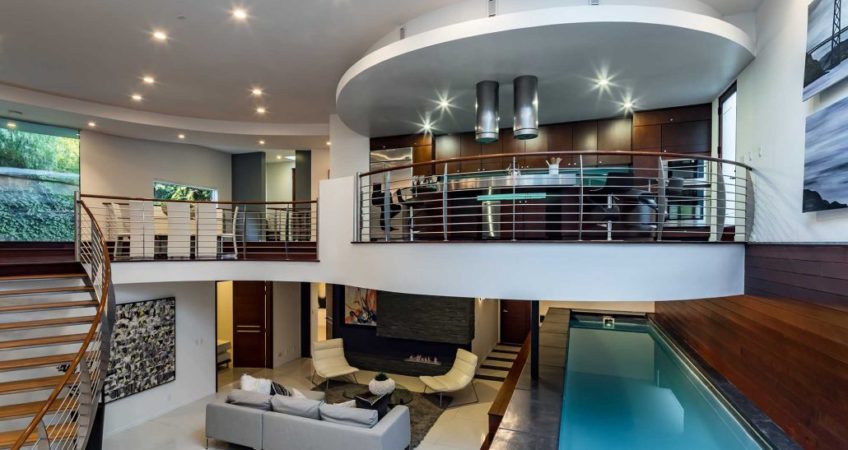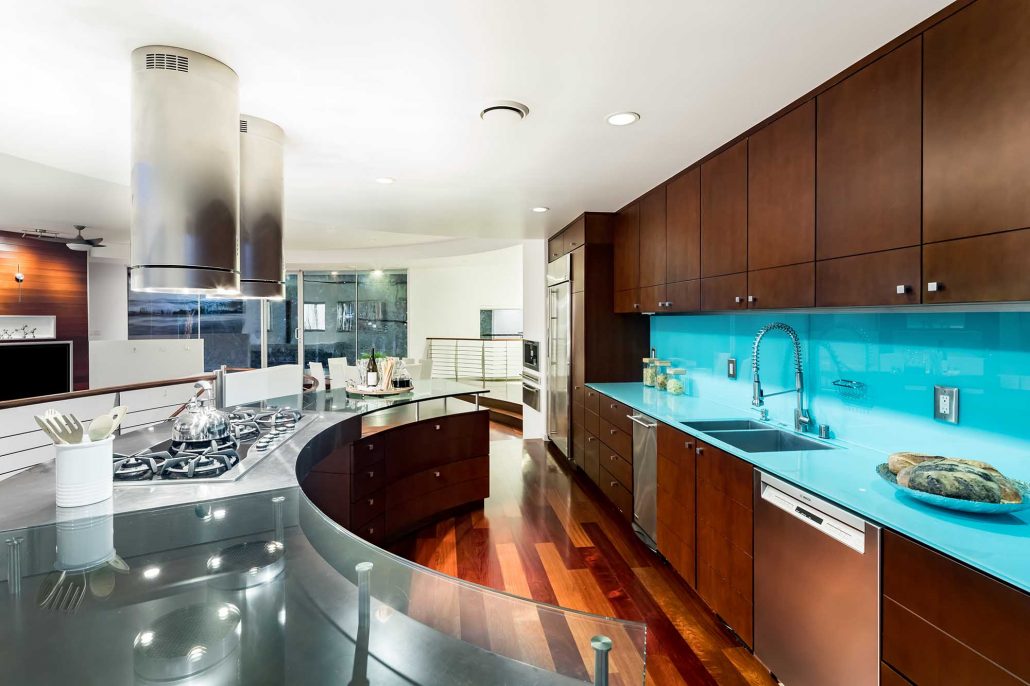How to Design Your Way to Sustainable Living - By Malika Junaid

Sustainability has become a growing priority for homeowners across the world. They don’t just want their design to be breathtaking, they also want it to minimize utility costs and help the environment. Much to my delight, this has resulted in more of my clients wanting to make their homes less wasteful and more energy efficient. As an architect, I have a special passion for sustainable design and its many benefits. This is why I encourage my clients to embrace green living and seek sustainable opportunities that can complement and enhance their lifestyles.
When people think of sustainable design features in a residence, the common elements tend to be concentrated in 4 areas. Let’s take a look at these domains and some of the top solutions I’ve used in my past projects. With the tips given here, you too will be able to create a beautifully sustainable home.
1. Site Evaluation
To achieve high sustainability, you need a great plan. This is why site evaluations are so important. By having a professional architect assess your property, you can identify strong opportunities to maximize your home’s “greenness”.
For example, studying the topography of your property can help your architect make your home work with the landscape, not against it. Site evaluations can also help find the areas with highest sun exposure. This will show you where your home’s design can capture the most light and enhance your indoor illumination. It’s the first step toward a brighter, more uplifting interior.
It’s important to remember that site evaluations aren’t just useful for new building projects, they’re also valuable for renovations. They can help you gain new insights into how your existing home can become greener and more efficient.
2. Energy Efficiency
Energy efficiency is one of the top sustainability concerns of my clients. That’s quite understandable! Paying for a home’s electricity needs can get quite expensive, and traditional electricity sources put a strain on the environment.
I always recommend for my clients to use a combination of strategies to lower their energy consumption. This can include building their home in the right orientation, choosing tinted or insulated windows, selecting energy efficient appliances, and even installing renewable energy sources, like solar panels.
Solar panels have become increasingly popular. This is thanks to their ability to cover most or all of a home’s electricity needs. In California, solar saves homeowners an average of $1,500 per year on their energy bills, resulting in an average profit of nearly $400.
The benefits are so well-known these days that both federal and state governments are offering tax incentives for homeowners to go solar. It is even starting to become a requirement: California now mandates that all new homes have solar panel systems.
I’ve found that whole-house dehumidifiers are also excellent tools for saving energy. High humidity makes the air feel warmer, thereby requiring more cooling to compensate. Using a dehumidifier in the summer can significantly minimize your need for air conditioning, thus lowering your energy bills.
3. Water Efficiency
As temperatures rise around the globe, water is becoming more scarce. This has made saving water a prime concern, especially here in dry California.
Fortunately a variety of systems are available for harvesting, recycling, and treating the water that is used in your home. I’ve used many different kinds, each with their own purpose and benefits:
- Dual-purpose rainwater harvesting systems can both dissipate stormwater and redirect recycled water to your laundry system or landscaping.
- Gray water recycling systems collect mostly clean waste water from baths, sinks, washing machines, and other appliances, then reuses them in toilets and landscaping.
- Home water filtration systems purify tap water by removing harmful pollutants.
- Hydronic heating systems and aluminum-clad subfloor radiant heating (e.g: Warmboards) are often more energy efficient than forced-air heating.
Efficient landscape design, location-based weather forecast irrigation systems, and other water-saving methods can also have a big impact on your water usage. If your property is in the hills, using natural slopes and added irrigation canals will help distribute rainwater over your yard, reducing your need to water your lawn and plants. These features can also protect areas from accumulating too much water during heavy rain, preventing damage to your landscape and foundation.
Even just selecting the right low flow fixtures for your bathroom will reduce your water bills, since this is where 75% of the average home’s water usage occurs. As much as 25% of that comes just from flushing the toilet.
4. Material Selection
Green building is all about choosing the right materials. An experienced architect can help you choose building materials that are non-toxic and environmentally friendly.
There are a few criteria for determining whether or not construction materials are truly sustainable. A green material will be at least one of the following: free of harmful chemicals, crafted from renewable resources, recycled, or recyclable. Examples include bamboo wood flooring, and concrete alternatives like “hempcrete”.
If your project involves demolishing existing structures, you should aim to re-use some of the materials. This will help you reduce waste, and can even result in a beautiful transformation. I personally love respecting the history of a property by giving its old materials new life in a modern design. For example, you could reuse your home’s old bricks to create an industrial-style kitchen backsplash, or make a rustic accent wall out of reclaimed wood. The possibilities are endless, it just takes a bit of creativity.
Pushing Further: Innovative Sustainability
There’s more to sustainable design than just the 4 domains listed above. Much of it requires thinking outside the box, finding creative ways to take advantage of the unique opportunities your project presents to you. This is personally my favorite part of designing sustainable homes!
Here’s an interesting example: Some of my projects in the hills have required dissipator tanks for stormwater runoff. For these, my team integrated smart local weather forecast controllers, giving the tanks versatility. During regular rain, the storm tanks act as normal rainwater collectors; when the forecast predicts a storm, the controllers then drain out the tanks to let them function as dissipators.
Another example that really pushes boundaries is building indoor pools. I’ve done this for a number of clients, all of whom have absolutely loved the results. Building the pools indoors not only adds luxury to the home, but also makes the pools more energy efficient.
This is because outdoor temperatures are often cooler than indoor temperatures, meaning that it takes more energy to heat outdoor pools. Heating a pool from a comfortable indoor temperature is much more efficient, and gives the added benefit of year-round use.

Sustainability is the Key to Future-Proof Design
Following some of the tips I’ve shared above will help you in your pursuit of a greener home. You’ll be able to enjoy a more rewarding and eco-friendly lifestyle that is aligned with the values of tomorrow. Sustainability is becoming increasingly important, and I firmly believe that it is one of the defining features of future design.
Post a comment
Your email address will not be published. Required fields are marked *